(Photos are the copyrighted property of the photographers. Permission to use any of their photos for other purposes must be obtained from the photographer.)
These photos are this year's entries (winners will be noted). You may be able to right-click on an image and view it in a separate tab/window to see a larger zoomable version.
Wide Field

Nightscape photo of the central Milky Way taken on the evening of Aug. 29, 2025. Camera: Canon R6II. A 15-second exposure with 17 mm lens at ƒ/4 and ISO 6400.
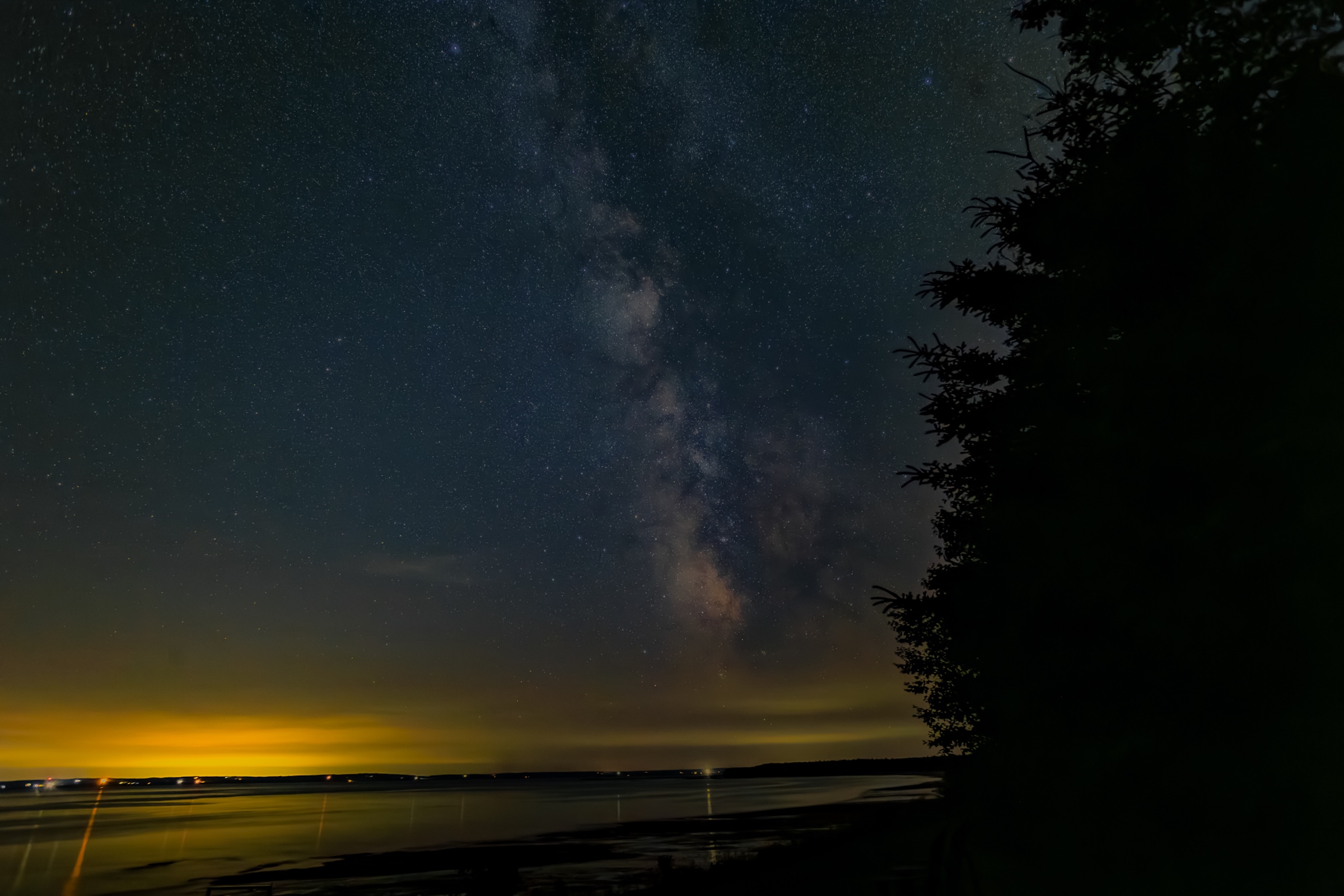
Taken on the evening of July 29, 2025. Camera: Canon R6II. A 30-second exposure with a 40 mm lens taken at ƒ/5.0 and ISO 2000.

Moon and Venus over farmland. This image of the Waning Crescent ~10% Moon and Venus over Farmland on Sunday October 19, 2025 at 6:51 AM ET. PM ET. Equipment was Nikon Coolpix P950 handheld for this single exposure. Focal length 15.2 mm f/4 exposure time 1/30. Resized in GIMP.

Geese Flying under a Full Moon. This image of the almost full Moon (hours from full) as a flock of Canada Geese fly underneath. This image was captured Tuesday, November 4, 2025 at 6:05 PM ET. Equipment was Nikon Coolpix P950 handheld for this single exposure. Focal length 24.1mm f/4 exposure time 1/250. Noise reduction in Topaz Photo AI; Resized in GIMP.
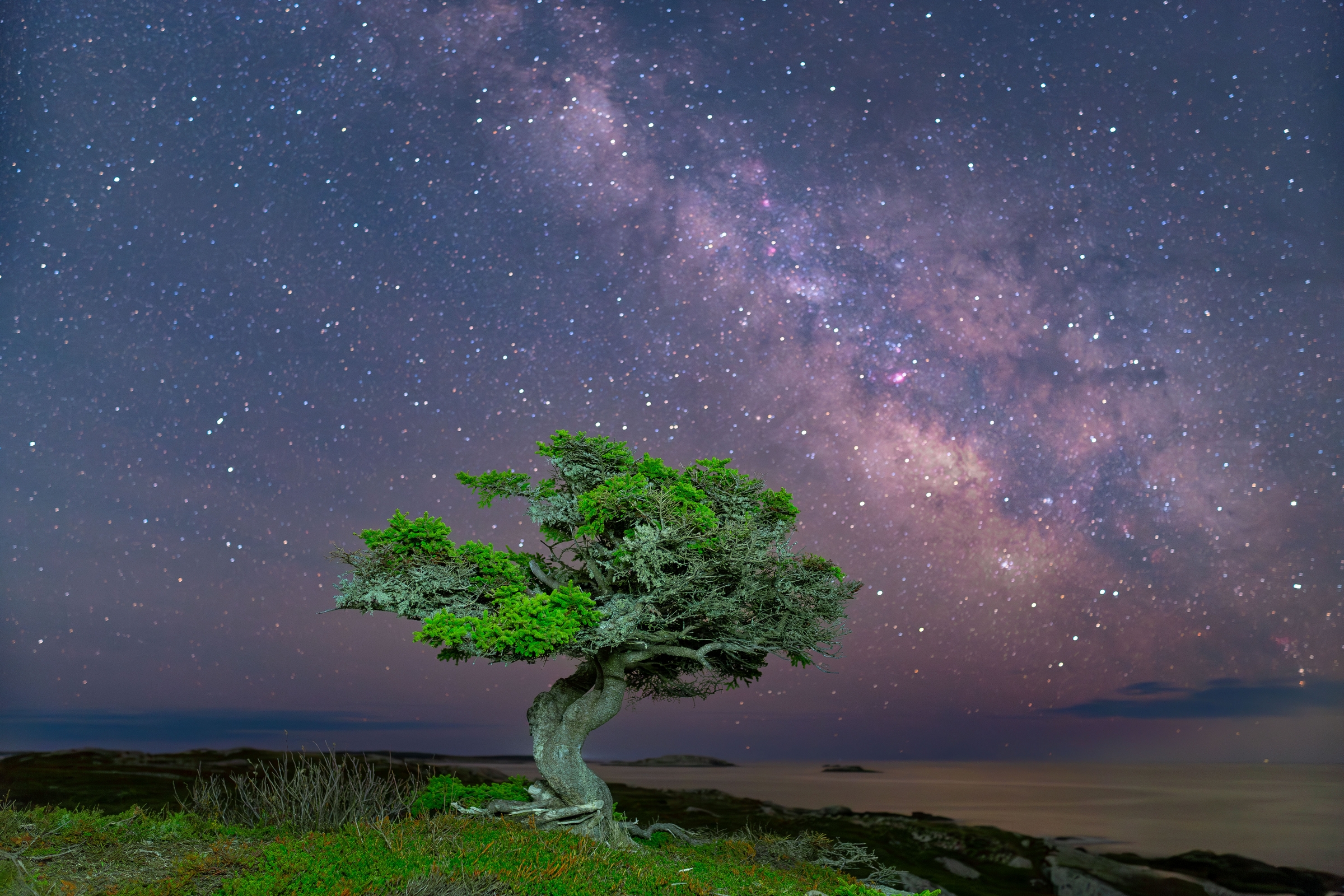
Little Tree By The Sea The Milky Way. I took advantage of the clear skies on this early morning to photograph the Milky Way along the coast. The harsh coastal conditions of poor soil, high winds and salt spray have stunted the growth of this spruce tree limiting it to a small dense shrub like growth form resembling broccoli or a bonsai tree. The tree is only about five feet tall and is much older than it appears. This tree form is known as Krummholz spruce meaning crooked wood. Capture Details: May 8, 2024, 2:22 AM Canon 6D camera, Irix 30mm f1.4 lens at f2.2 Exposure 20 sec. At ISO 1600 Processed using only Adobe camera raw

Cosmic Coastline Comet C/2023 A3 (Tsuchinshan – atlas) The comet was just naked eye visible once you knew where to look. This was a real cosmic adventure, dodging tides, crossing rivers, climbing over slippery rockweed covered rocks and passing through arches and tunnels created by tidal erosion. Capture Details: Oct., 22, 2024, 8:00 PM Canon 6D, Irix 21mm f1.4 lens at f1.6 Exposure 15 Sec. At ISO 1600 Processed in Adobe camera RAW only.
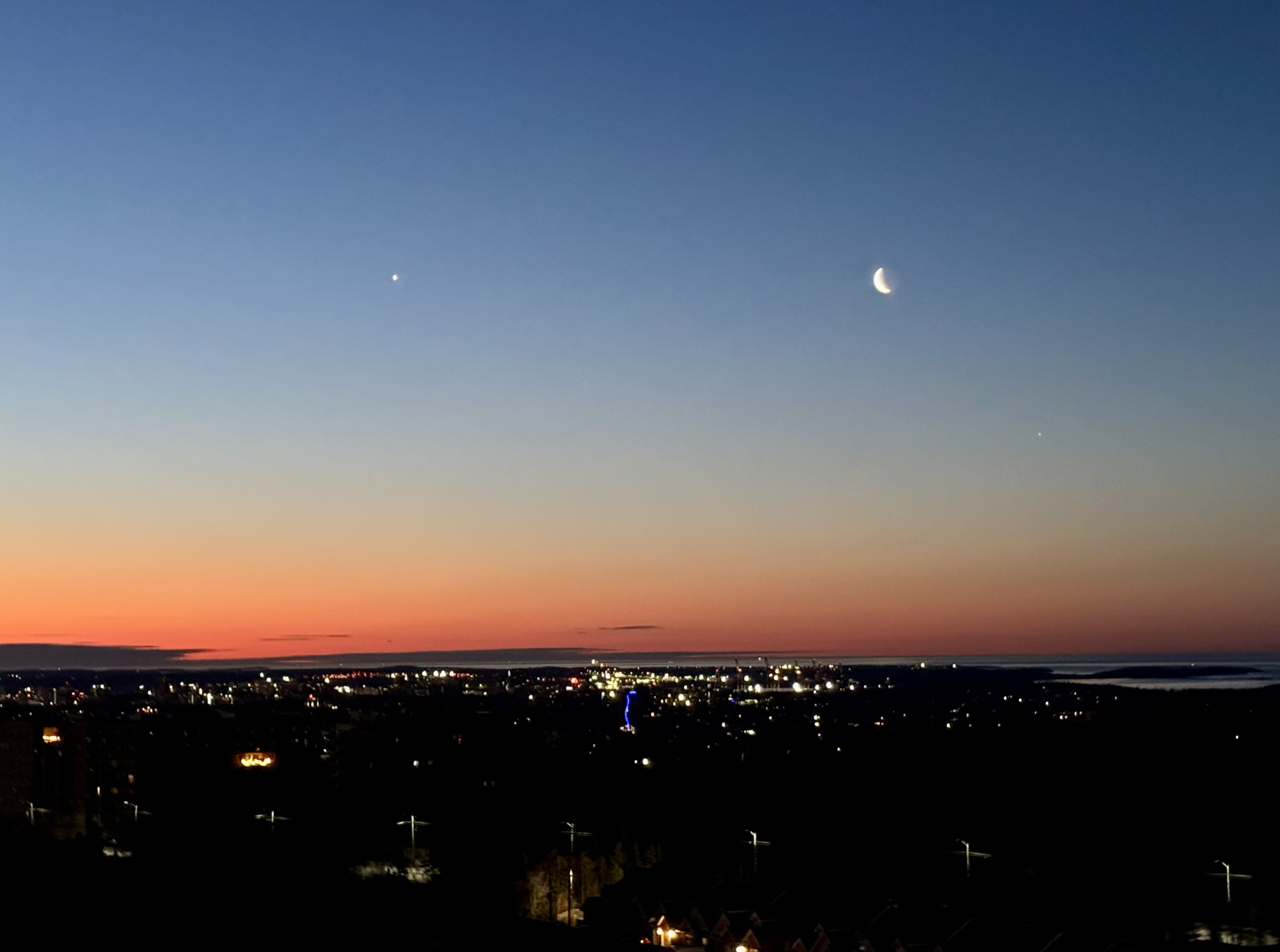
The early morning April 24th sky looking south-east provided the land backdrop to the waning crescent Moon with earthshine and Venus to its north sharing the same altitude. A truly beautiful sight (if you were awake at 0533). Camera: iPhone 15 Pro aperture 24mm; f/1.78 Image: ISO 6540; 65mm; ev-0; exposure - 1/24sec Processing: Minimal crop and straightening; removal of slight blur of sky object using iPhone Edit.
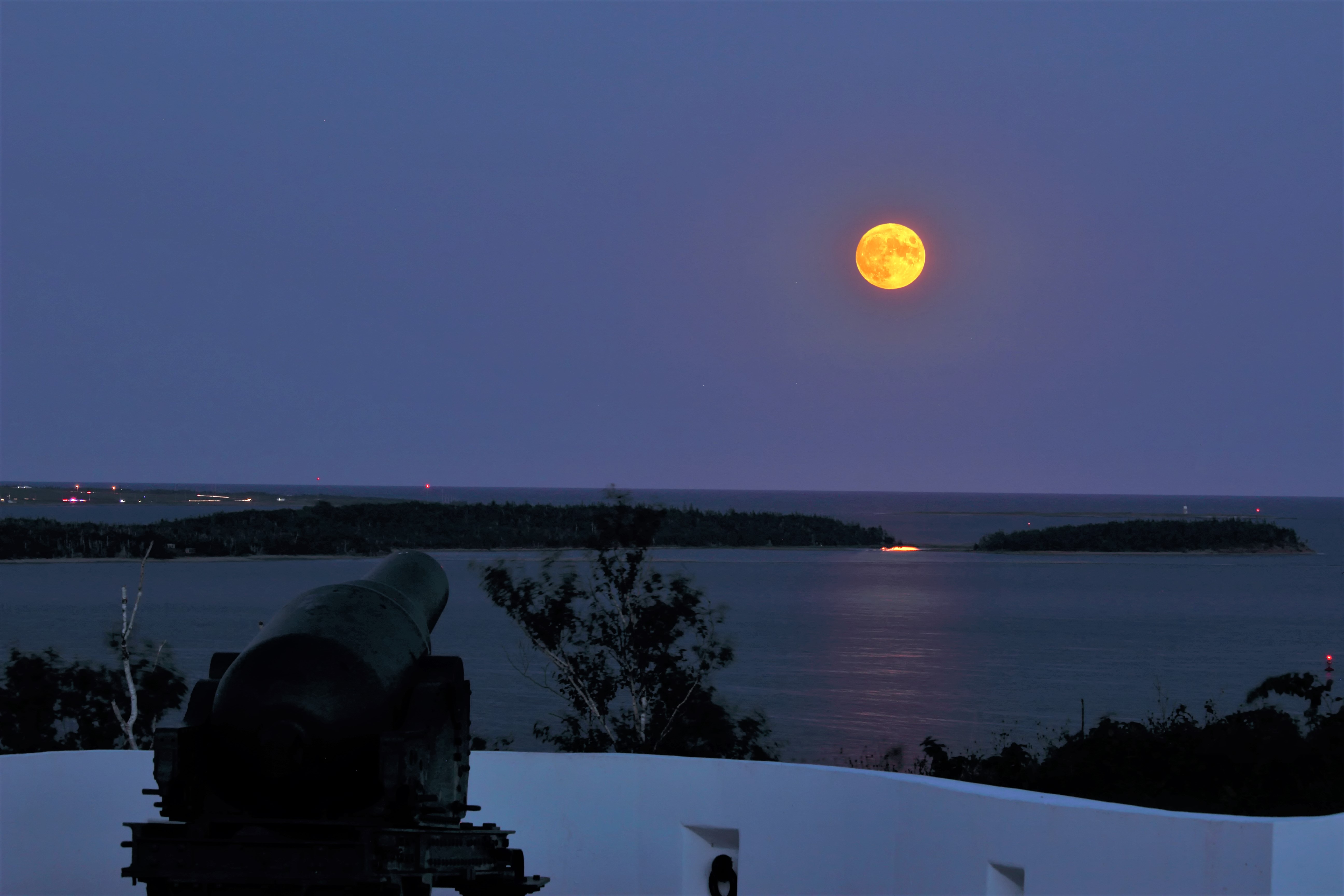
Harvest Moon Rising (over the Atlantic Ocean). The Harvest Moon (99.8% illuminated) was photographed several minutes after rising above the east-southeast horizon. The Moon has a red-yellow hue and appears to be slightly flattened because of its proximity to the horizon. Captured at 7:45 pm on 20 September 2021. Equipment consisted of a tripod-mounted Canon Rebel T3i DSLR on manual at ISO-200 with 55mm-250mm Canon lens at 250 mm and f/9; 1.3-second exposure. A single 1.3-second exposure was captured in RAW format and converted to TIFF format using Canon’s Digital Photo Professional. Photoshop CS2 and Microsoft Photo were used to tweak clarity, contrast, highlights, and shadows in the final image.
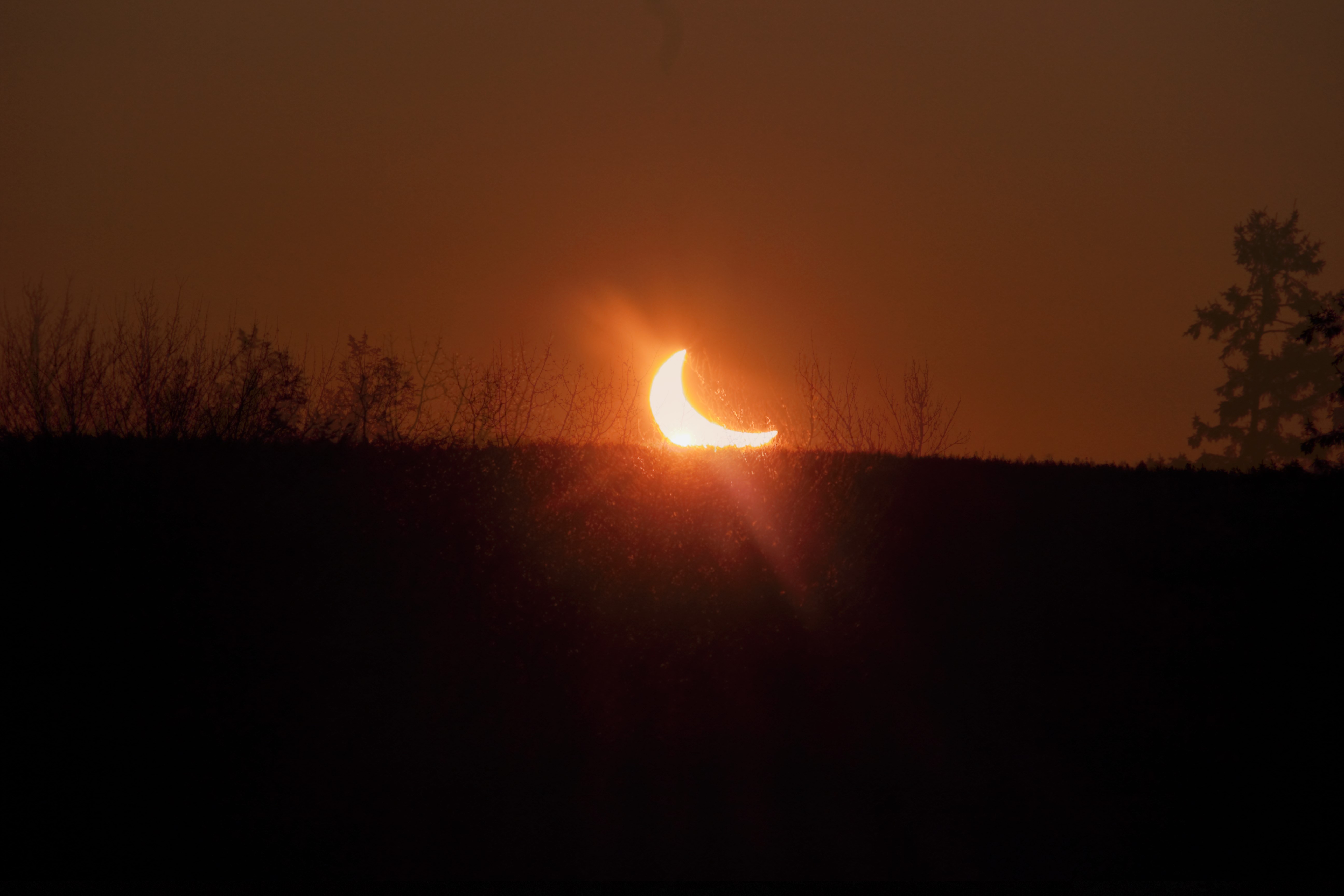
The Sun at sunrise appears as a crescent due to the ongoing partial exlipse Captured at 7:04 am on 29 March 2025. Equipment consisted of a tripod-mounted Canon Rebel T3i DSLR on manual at ISO-400 with a 55-250mm Canon lens at 50mm, f/11; 1/4000-second exposure. A single exposure was captured in RAW format and converted to TIFF format using Canon’s Digital Photo Professional. Photoshop CS2 was also used to adjust levels and correct color balance/saturation. Microsoft Photo was used to tweak clarity, contrast, highlights, and shadows in the final image.
Solar System

ZWO ASI2600MM, EFW Filter wheel, Skywatcher Esprit 100ED, Focal Ratio 5.5. Optolong Red – 14 × 60s on Oct 24th, Optolong Green – 15 × 60s on Oct 24th, Optolong Blue – 24 × 60s on Oct 24th
Processing: SetiAstro Automatic DBE, BlurX, NoiseX, LinearFit, CometAlignment, StarX, Colorcalibration, SetiAstro StatisticalStretch, RangeSelection, CometAlignment on combined stacked comet and stars only to align the RGB channels.
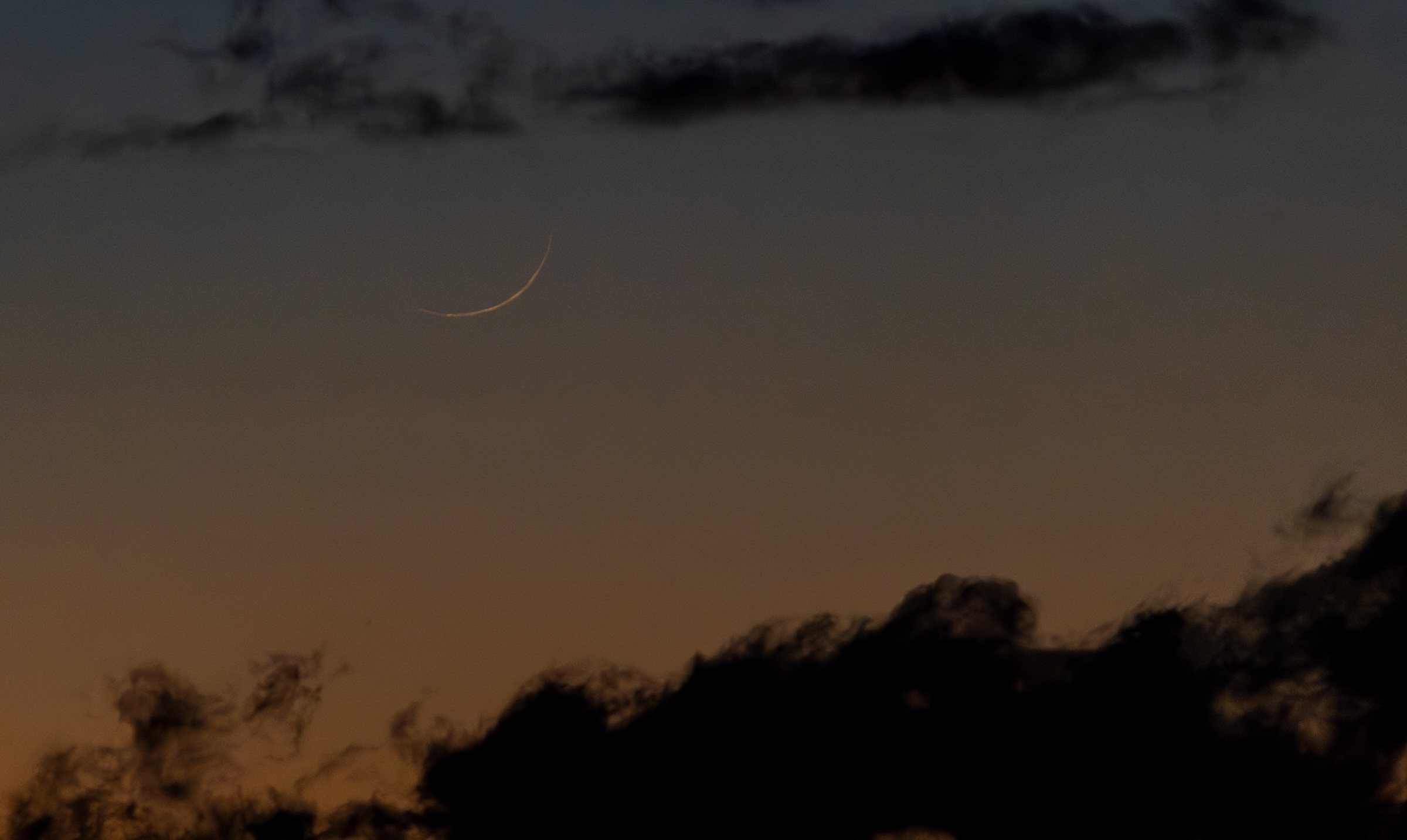
A telephoto of a 22-hour crescent moon after sunset on Feb. 28, 2025.
Camera: Canon R6II. A 1/40 second exposure with 400mm lens at ƒ/5.6 at ISO 12800.

Telephoto of the partial solar eclipse after sunrise on March 29, 2025. Camera: Canon R6II, A 1/6400-second exposure with 400 mm lens taken at ƒ/14 and ISO 12800.
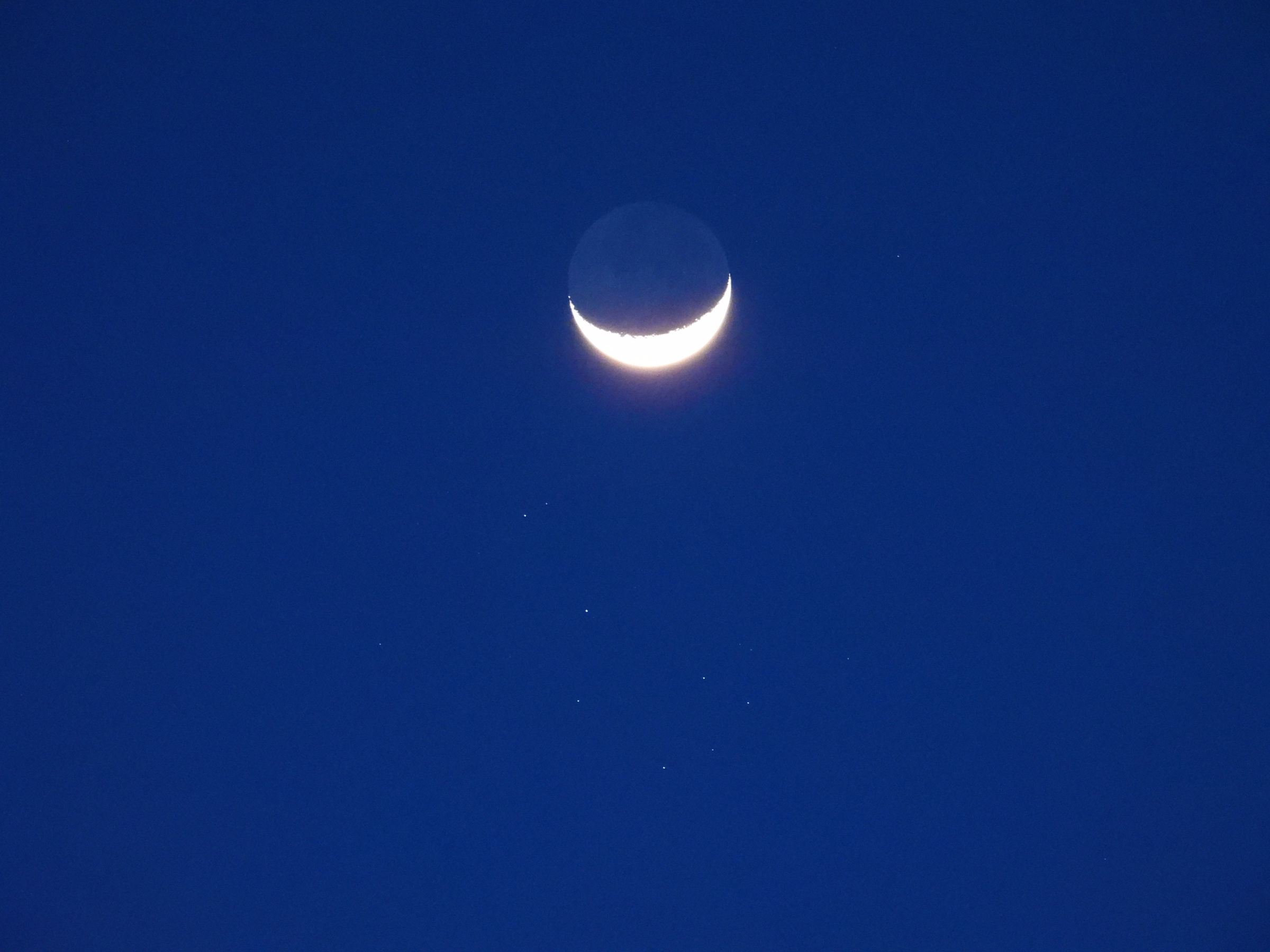
Waxing Crescent Moon and Pleiades. This image of The 11% illuminated Waxing Crescent Moon and Pleiades under suburban skies was taken on Tuesday April 1, 2025 at 7:51 PM ET. Equipment was Nikon Coolpix P950 handheld for this single exposure. Focal length 80.3 mm f/5 exposure time 1/10. Resized in GIMP.
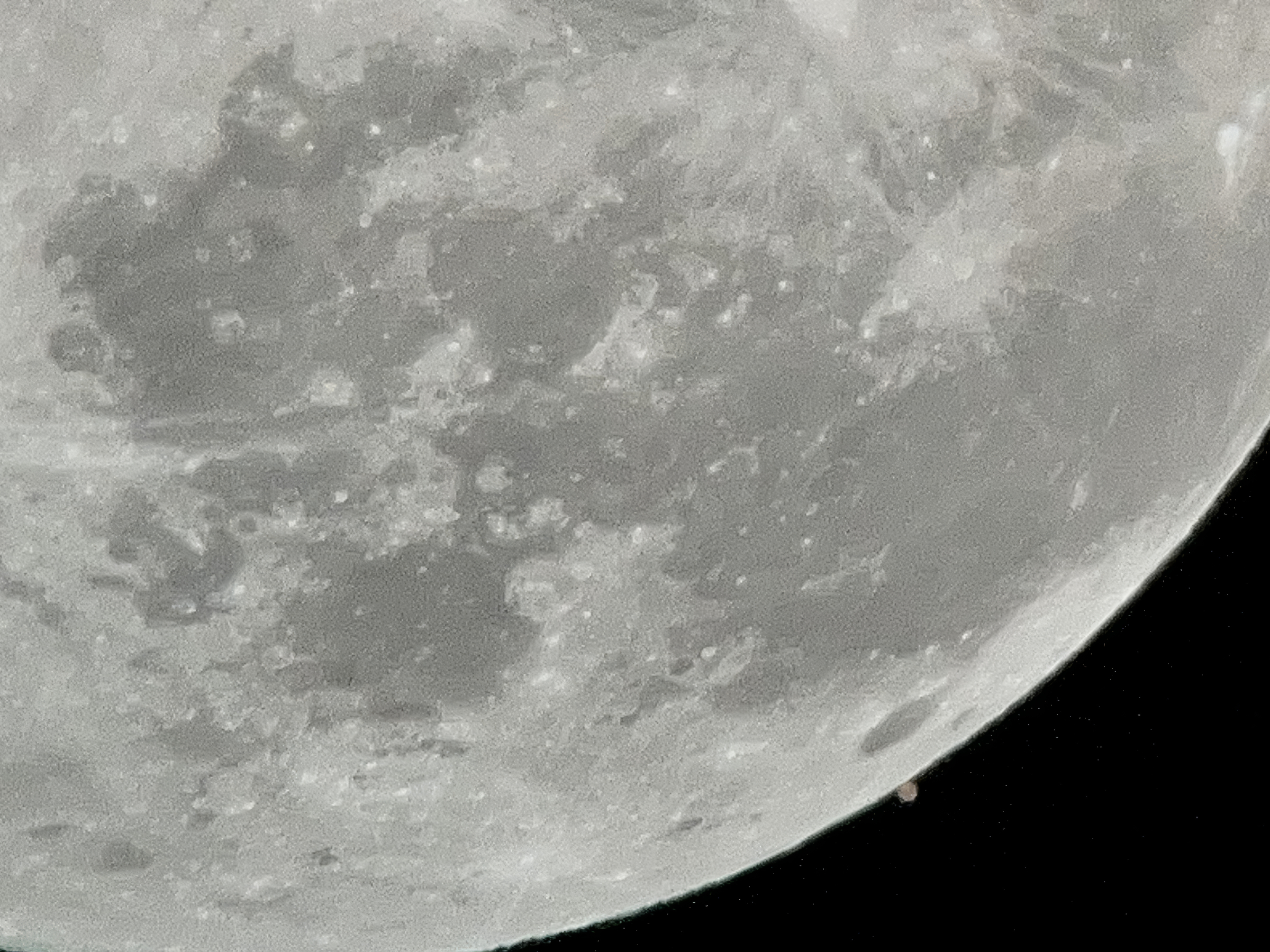
Lunar occultation of Mars. This image of Mars just as it was about to “pass” behind the full Moon was taken January 13, 2025 at 9:20 PM ET. Equipment was an iPhone 13 handheld over the eyepiece of a Swarovski Optik Spotting Scope for a single exposure. Focal length 5.1 mm f/1.6 exposure time 1/2,024. Resized in GIMP.

March 6, 2017 at 23:13 Canon T3, ISO 100, 1/160s Skywatcher EQ6 mount, Skywatcher 190MN Single exposure only levels adjusted in Pixinsight

December 22, 2023 ZWO ASI 224 camera Skywatcher EQ6 mount, Skywatcher 190MN and Tele Vue 3X Barlow Stack of 1700 best frames from video of 5000 at 104 frames per second. Staked in Auto Stakkert and processed in Registax.
Deep-Sky
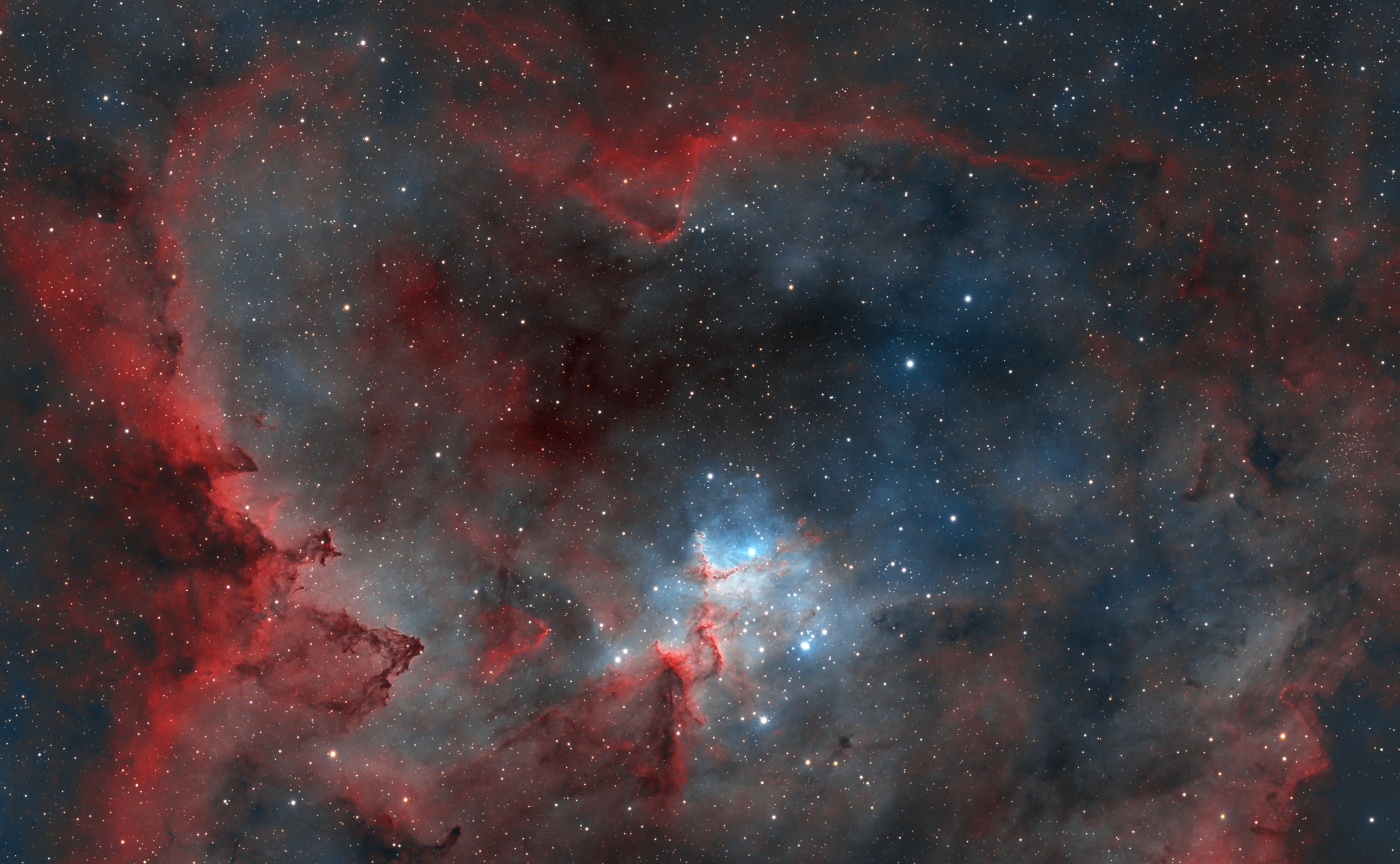
Capture Details: Focal Ratio 5.5. • Skywatcher Esprit 100ED on EQ6-R Pro • ZWO ASI2600MM Pro • Optolong 36mm filters: • SII (7nm): 20×600s • Ha (7nm): 42×600s • OIII (6nm): 36×600s Processing Steps: SetiAstro Automatic DBE, BlurX, NoiseX, StarX, LinearFit, FORAXX, SetiAstro/StatisticalStretch, Toolbox/Selectivecolorcorrection.

ZWO ASI2600MM, EFW Filter wheel, Skywatcher Esprit 100ED, Focal Ratio 5.5. Optolong 7nm Ha – 31 × 600s on Sept 26 & 27, Optolong Luminance – 83 × 180s on Sept 25, Optolong Red – 39 × 180s on Sept 22 & 24, Optolong Green – 38 × 180s on Sept 22 & 24, Optolong Blue – 34 × 180s on Sept 22, 23 & 24. Processing Steps: SetiAstro Automatic DBE, BlurX, NoiseX, LinearFit, LRGBCombination, Colorcalibration, SetiAstro StatisticalStretch, NBRGBCombination with a 0.2 Ha Blend.
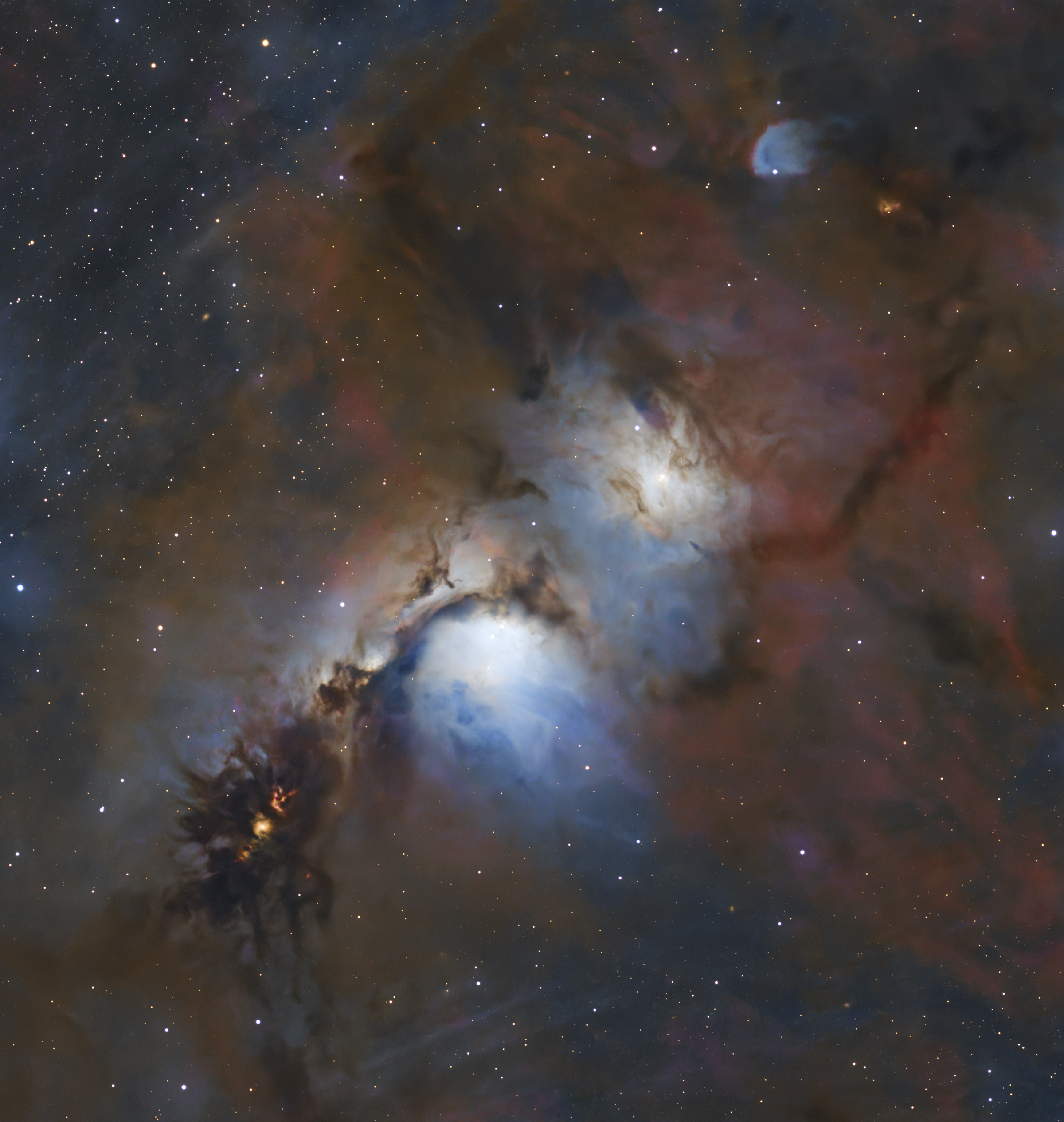
This is a reflection Nebula located in the constellation Orion. It includes NGC 2071, NGC 2068, & NGC 2064. Capture details: December 14, 2023, ZWO ASI2600MC Pro, Gain=300, Offset=50 , C14Edge HD+Hypterstar, Sywatcher EQ8-Rh Pro, Exposure=30x2min=1 hour. f/1.9, Processed in PixInsight: WBPP script for calibrating light frames with darks & flats, GraXpert for removing gradients, BlurXterminator, SPCC, StarXterminator, Stars Stretched with curves for lum and saturation, Starless image stretched with GHS, curves for saturation, Recombined stars and starless image with ScreenStars script, NoiseXterminator for noise removal, Fixed a couple of blemishes with Photoshop.
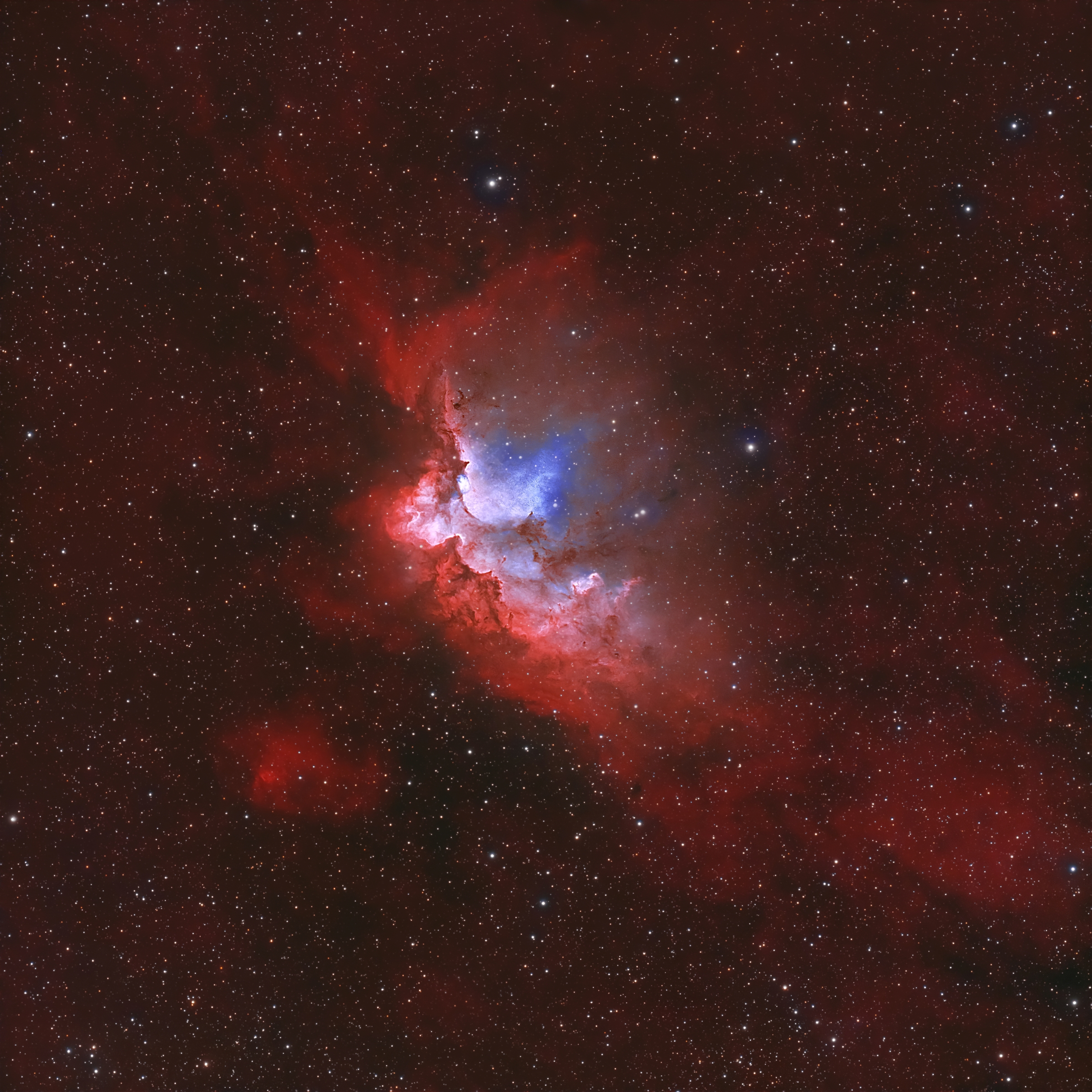
The Wizard Nebula, NGC 7380. ZWO 533MC Pro, Skywatcher Evostar 80ED, Optolong L-Enhance Filter, StarShoot Autoguider, PHD2, EQ6R Pro mount. 100 - 300 second subs, a little over 8 hours of data. Pixinsight, Photoshop, Photo Shop Express.
![DS-05 NGC4216 and Friends I selected NGC4216 and the area surrounding it in the Virgo cluster of galaxies to help me understand the resolution and sensitivities of my optical train and camera. It proved that these objects can be captured with my cooled ASI2600MC camera 107mm aperture optics with comfort. <i>Information here on NGC4216 selected from details found on Wikipedia NGC 4216 is a metal-rich[2] intermediate spiral galaxy located not far from the center of the Virgo Cluster[2] of galaxies, roughly 55 million light-years away.[2] It was discovered by German-British astronomer William Herschel on 17 April 1784. Physical characteristics Seen nearly edge-on, NGC 4216 is one of the largest and brightest spiral galaxies of the Virgo Cluster, with an absolute magnitude that has been estimated to be −22 (i.e.: brighter than the Andromeda Galaxy), and like most spiral galaxies of this cluster shows a deficiency of neutral hydrogen that is concentrated within the galaxy's optical disk and has a low surface density for a galaxy of its type. This explains why NGC 4216 is considered an anemic galaxy by some authors, also with a low star formation activity for a galaxy of its type. In fact, the galaxy's disk shows pillar-like structures that may have been caused by interactions with the intracluster medium of Virgo and/or with nearby galaxies. In NGC 4216's halo, besides a rich system of globular clusters estimated to number around 700 (nearly five times more than the Milky Way), two stellar streams that are interpreted as two satellite galaxies being disrupted and absorbed by this galaxy are present. NGC 4216 with SN 2024gy NGC 4216 seems to be in a place of the Virgo cluster where dwarf galaxies are being destroyed/accreted at a high rate, with it suffering many interactions with these types of galaxies. One supernova has been observed in NGC 4216: SN 2024gy (type Ia, mag. 16.3) was discovered by Kōichi Itagaki on 4 January 2024. </i> Date Imaged: 2025-04-28 Sky Conditions: Bortle 3-4; early waxing crescent Moon; average Transparency; average Seeing; mild temperature Camera: ZWO2600MC-P Filter: none Optical Train: ASKAR 107PHQ astrograph; f/7; fl - 749mm Mount: ZWO AM-5 Guiding: Antlia OAG; Software – ZWO/ASIAIR+ PHD2 Control: ASIAIR+ Pro Images Capture: Exposure - 600s; Gain 100; offset 50 Processed in PixInsight: WBPP integration including 18 Lights, masterDark and 30 Flat frames; drizzle x 2 and autocrop masterLight output; RCAstro Blur Exterminator; SetiAstro ADBE gradient removal; SPCC colour correction; RCAstro Noise Exterminator; RCAstro Star Exterminator; General Hyperbolic Stretch (Colour) to de-linearize starless; GHS several times to stretch target galaxies and bring up colours; GHS to stretch and control stars; Curves Transformation to saturate stars and adjust for colour; Curves to harmonize stars background; Recombined starless and stars with Pixelmath; Dynamic crop to highlight NGC4216 and other small galy images surrounding it. NGC4216 and Friends](/images/astrophotography/contests/2025/DS-05_NGC4216_and_Friends.jpg)
Information here on NGC4216 selected from details found on Wikipedia NGC 4216 is a metal-rich intermediate spiral galaxy located not far from the center of the Virgo Cluster of galaxies, roughly 55 million light-years away.[2] It was discovered by German-British astronomer William Herschel on 17 April 1784. Physical characteristics Seen nearly edge-on, NGC 4216 is one of the largest and brightest spiral galaxies of the Virgo Cluster, with an absolute magnitude that has been estimated to be −22 (i.e.: brighter than the Andromeda Galaxy), and like most spiral galaxies of this cluster shows a deficiency of neutral hydrogen that is concentrated within the galaxy's optical disk and has a low surface density for a galaxy of its type. This explains why NGC 4216 is considered an anemic galaxy by some authors, also with a low star formation activity for a galaxy of its type. In fact, the galaxy's disk shows pillar-like structures that may have been caused by interactions with the intracluster medium of Virgo and/or with nearby galaxies. In NGC 4216's halo, besides a rich system of globular clusters estimated to number around 700 (nearly five times more than the Milky Way), two stellar streams that are interpreted as two satellite galaxies being disrupted and absorbed by this galaxy are present. NGC 4216 with SN 2024gy NGC 4216 seems to be in a place of the Virgo cluster where dwarf galaxies are being destroyed/accreted at a high rate, with it suffering many interactions with these types of galaxies. One supernova has been observed in NGC 4216: SN 2024gy (type Ia, mag. 16.3) was discovered by Kōichi Itagaki on 4 January 2024.
Date Imaged: 2025-04-28 Sky Conditions: Bortle 3-4; early waxing crescent Moon; average Transparency; average Seeing; mild temperature Camera: ZWO2600MC-P Filter: none Optical Train: ASKAR 107PHQ astrograph; f/7; fl - 749mm Mount: ZWO AM-5 Guiding: Antlia OAG; Software – ZWO/ASIAIR+ PHD2 Control: ASIAIR+ Pro Images Capture: Exposure - 600s; Gain 100; offset 50 Processed in PixInsight: WBPP integration including 18 Lights, masterDark and 30 Flat frames; drizzle x 2 and autocrop masterLight output; RCAstro Blur Exterminator; SetiAstro ADBE gradient removal; SPCC colour correction; RCAstro Noise Exterminator; RCAstro Star Exterminator; General Hyperbolic Stretch (Colour) to de-linearize starless; GHS several times to stretch target galaxies and bring up colours; GHS to stretch and control stars; Curves Transformation to saturate stars and adjust for colour; Curves to harmonize stars background; Recombined starless and stars with Pixelmath; Dynamic crop to highlight NGC4216 and other small galy images surrounding it.

is the ’nose’ portion of the Shark Nebula found 650 ly distant in Cepheus; formed of clouds of interstellar gas and dust (about 15 ly across) showing against a rich starfield, it is part of a larger star-forming region called the Cepheus Flare. Also visible are the blue reflection nebulae LBN541 and LBN546. Date Imaged: 2025-10-25 Sky Conditions: Bortle 3-4; waxing crescent Moon; above average Transparency; average Seeing; mild temperature Camera: ZWO2600MC-P Filter: none Optical Train: ASKAR 107PHQ astrograph; f/7; fl - 749mm Mount: ZWO AM-5 Guiding: Antlia OAG; Software – ZWO/ASIAIR+ PHD2 Control: ASIAIR+ Pro Images Capture: Exposure - 600s; Gain 100; offset 50 Processed in PixInsight: WBPP integration including 18 Lights (2 rejected), masterDark and 30 Flat frames; drizzle x 2 and autocrop masterLight output; RCAstro Blur Exterminator; SetiAstro ADBE gradient removal; SPCC colour correction; RCAstro Noise Exterminator; RCAstro Star Exterminator; General Hyperbolic Stretch (Colour) to de-linearize starless; GHS several times to stretch target and bring up nebular gases; GHS to stretch stars; Curves Transformation to saturate stars and adjust for colour; Curves to harmonize stars background; Recombined starless and stars with Pixelmath; Dynamic crop to highlight the Dark Shark.

The Cigar Galaxy (Messier 82) The Cigar Galaxy is an edge-on starburst galaxy located in the constellation Ursa Major. Captured over 5 nights (25, 26 and 27 January 2025, 1 and 22 February 2025). Equipment consisted of a SkyWatcher 200mm f/5 reflector telescope with Baader coma corrector, SkyWatcher EQ6R Pro mount (PHD2-guided using a 50mm f/4 guide scope) and a ZWO ASI533MC Pro CMOS camera with an Optolong eNhance filter. SharpCap (gain 110, RAW16/FITS format) was used to capture 8-minute lights and calibration frames. DeepSkyStacker was used to debayer and stack 35 8-minute subs, 20 darks, 40 flats, 40 dark flats, and 40 bias frames. GraXpert was used to remove gradients and SiriL was used for photometric color calibration. Photoshop CS2 with Astronomy Tools Action Set was used to adjust levels, stretch data, increase saturation, and remove noise in the final image.
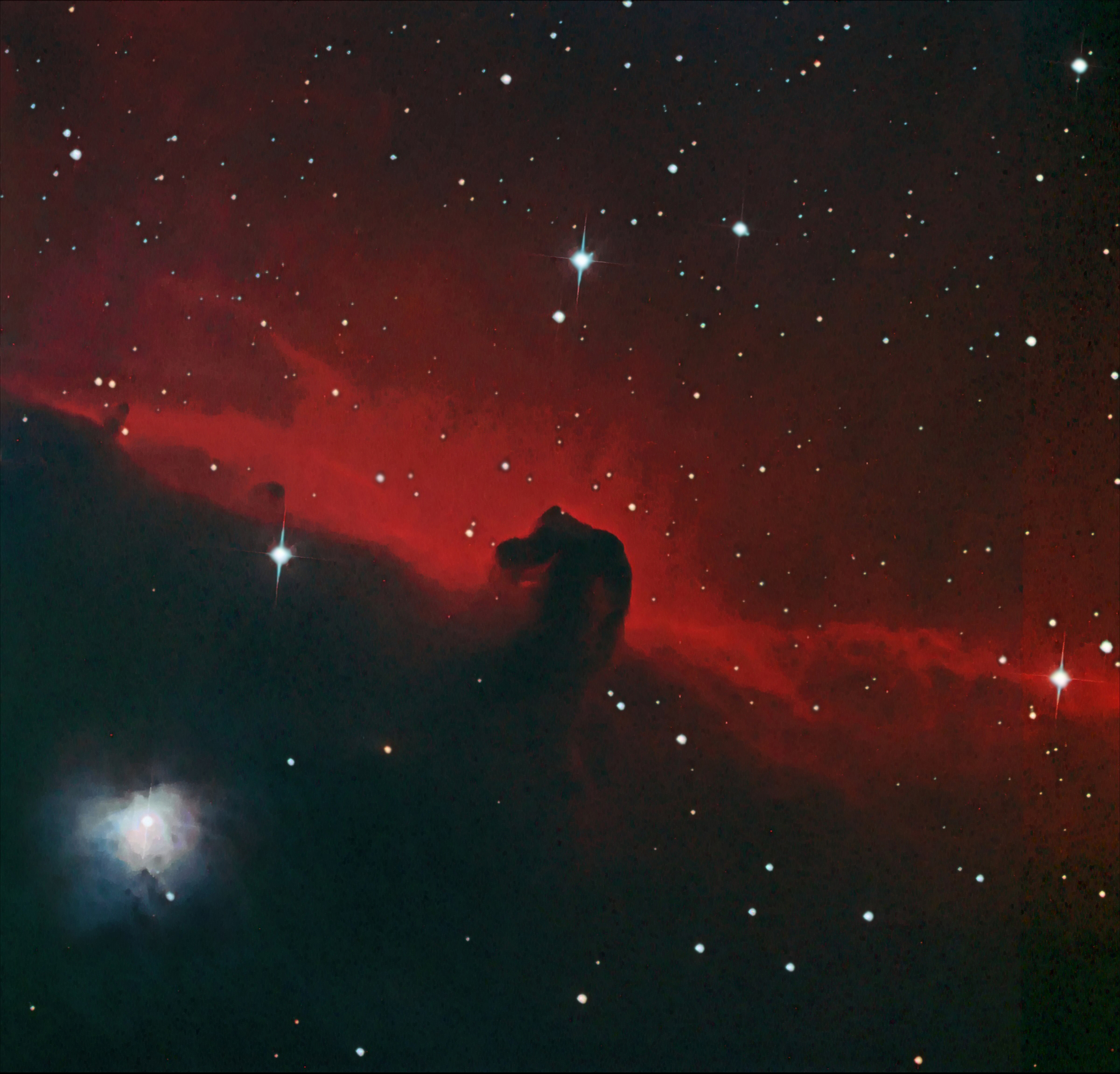
The Horsehead Nebula is a dark nebula surrounded by an emission nebula that is located in the constellation Orion. Captured over 3 nights (25 and 27 January 2025, 1 February 2025). Equipment consisted of a SkyWatcher 200mm f/5 reflector telescope with Baader coma corrector, SkyWatcher EQ6R Pro mount (PHD2-guided using a 50mm f/4 guide scope) and a ZWO ASI533MC Pro CMOS camera with an Optolong L-eNhance filter. SharpCap (gain 110, RAW16/FITS format) was used to capture 8-minute lights and calibration frames. DeepSkyStacker was used to debayer and stack 29 8-minute subs, 20 darks, 40 flats, 40 dark flats, and 40 bias frames. GraXpert was used to remove gradients and SiriL was used for photometric color calibration. Photoshop CS2 with Astronomy Tools Action Set was used to adjust levels, stretch data, increase saturation, and remove noise in the final image.

September 15,16,17,19 and 20. 60 images at 10min each for total of 10 hours. ZWO 585 MC Skywatcher EQ6 mount, Skywatcher 190MN Stacked in Deep Sky Stacker, Processed in Pixinsight with RC Tools, StarX, Blur X and Noise X.
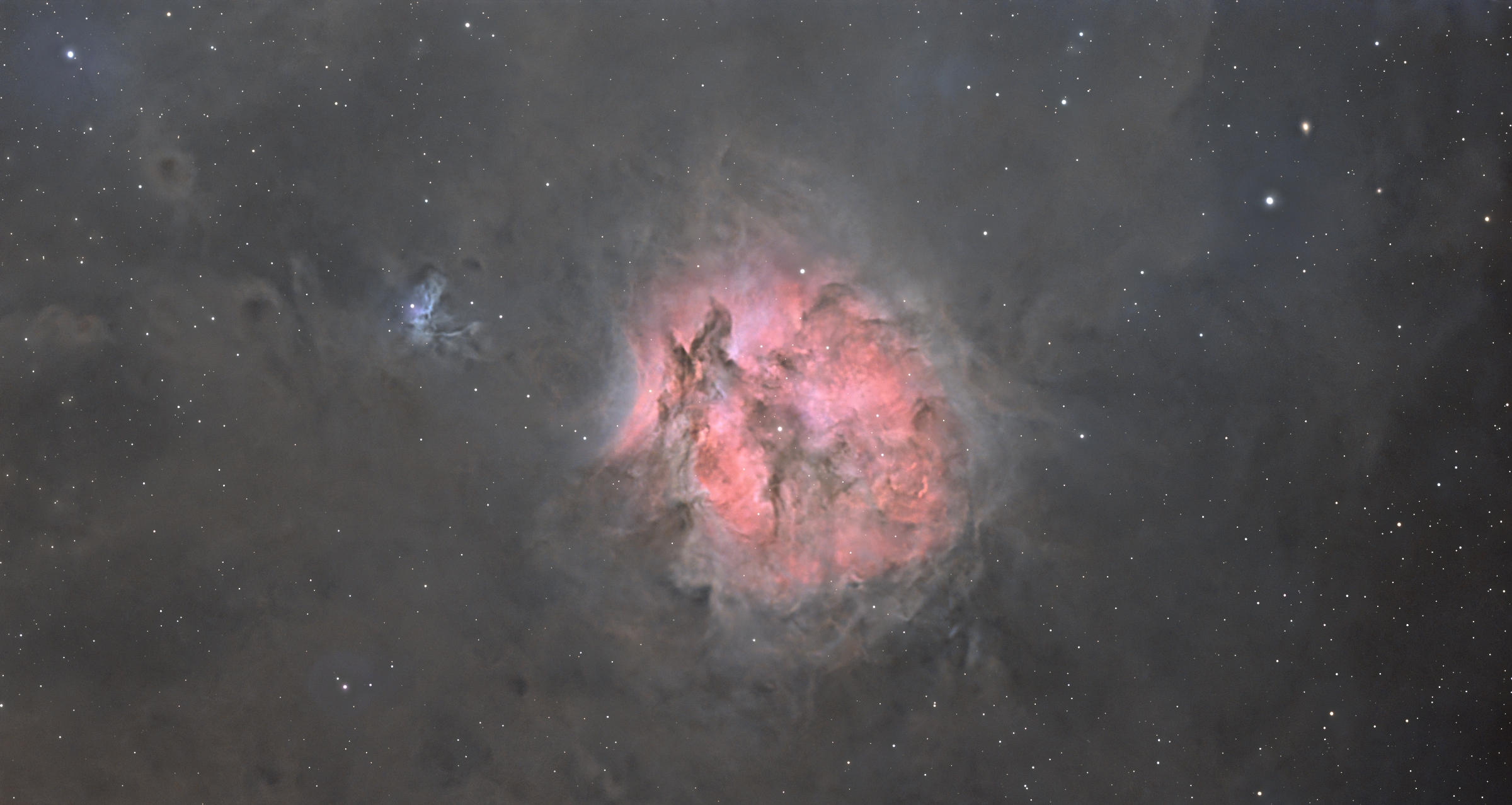
August 18,19,21,26 and 27. 57 images at 10min each for total of 9 hours and 30 minutes. ZWO 585 MC Skywatcher EQ6 mount, Skywatcher 190MN Stacked in Deep Sky Stacker, Processed in Pixinsight with RC Tools, StarX, Blur X and Noise X.
